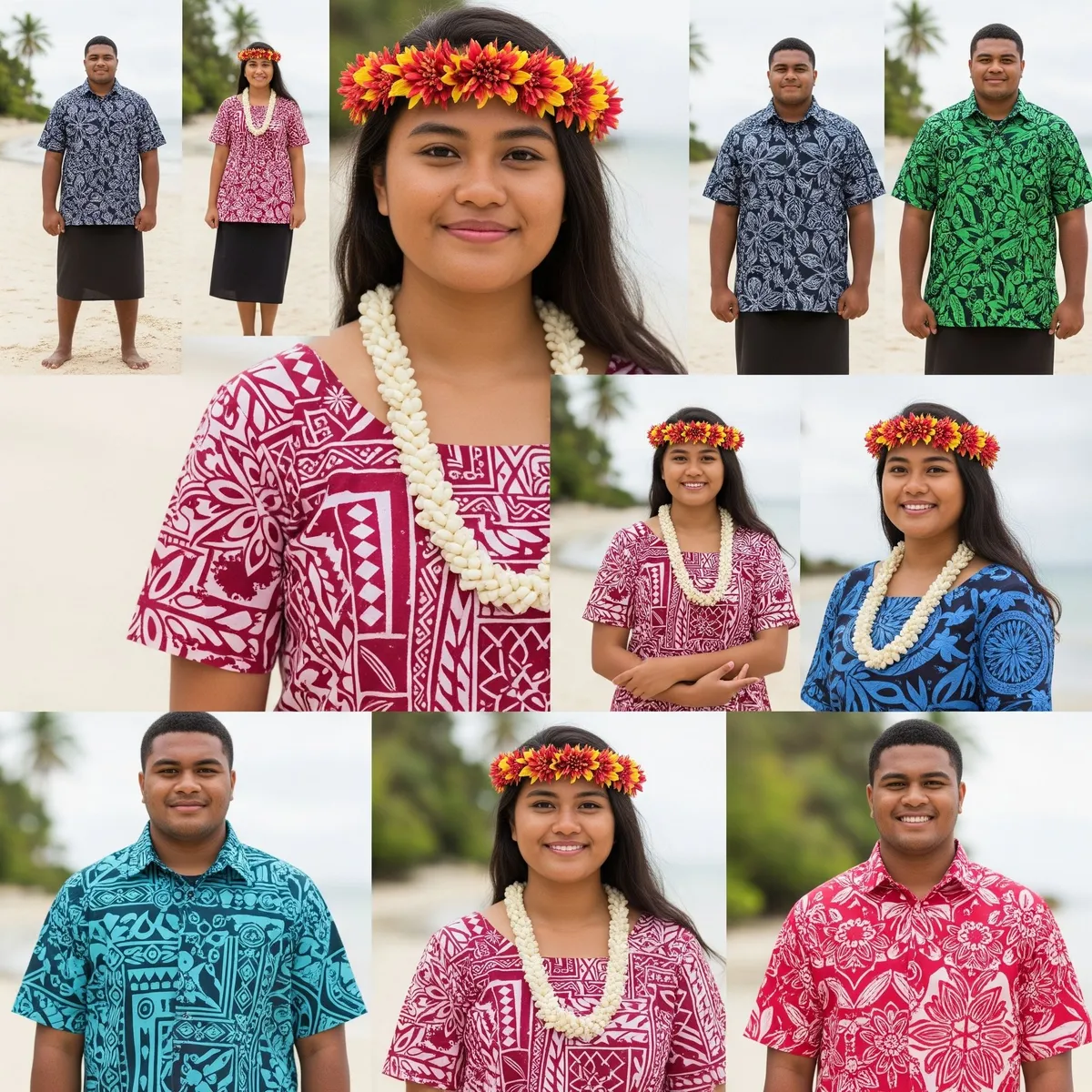Lavalava: Tradition, Style & Meaning in Pacific Life
What is a Lavalava?

The lavalava, also known as the ‘ie lavalava in Samoa, is one of the most recognizable garments of the Pacific. At first glance, it may appear to be a simple wraparound cloth, but its cultural meaning runs deep. Found across Polynesia—in Samoa, Tonga, Tahiti, Fiji, and even adapted in Hawaii—the lavalava has endured as both an everyday necessity and a symbol of cultural pride.
A lavalava is typically a rectangular piece of fabric, tied or wrapped around the waist. Its versatility makes it suitable for daily wear, formal occasions, and even athletic activities. It is a garment of comfort, dignity, and identity, bridging tradition and modern style.
The History of Lavalava
The lavalava’s origins trace back to the indigenous weaving traditions of Polynesia. Before the introduction of imported fabrics, lavalavas were made from natural fibers like pandanus leaves, barkcloth (tapa), or handwoven coconut fibers. These materials were carefully dyed with natural pigments, often in earthy reds, browns, and blacks, to create meaningful designs.
In Samoa, the ‘ie lavalava became not only practical attire but also a cultural statement. Its use spread widely across Polynesia, with regional variations:
- In Tonga, the taʻovala is a related garment, often worn with a woven mat around the waist as a sign of respect.
- In Fiji, the sulu serves a similar role in daily and ceremonial life.
- In Tahiti, the pareu shares stylistic elements with the lavalava but often features vibrant floral patterns suited to the island’s French-Polynesian influences.
Through colonial contact, the introduction of cotton and trade fabrics shifted lavalava production toward brightly printed cloth, but the cultural function remained unchanged.
Cultural Meaning of Lavalava
The lavalava carries multiple layers of meaning:
- Identity and Heritage
- Wearing a lavalava connects the individual to their ancestral traditions. It communicates respect for culture and pride in Pacific identity.
- Social and Ceremonial Respect
- In Samoa, formal gatherings often require specific lavalavas, particularly for church services, funerals, or weddings.
- Chiefs and orators may wear distinctive patterned versions to denote authority.
- Gender and Family Roles
- Men often tie their lavalavas shorter for practicality in farming, fishing, or sports.
- Women’s versions are longer, flowing, and sometimes layered for modesty.
- Children wear lavalavas in school and community events, continuing the tradition from a young age.
The lavalava thus serves as both clothing and cultural language, expressing values of dignity, unity, and belonging.
Modern Lavalava: Tradition Meets Fashion
In today’s Pacific societies, the lavalava has adapted while retaining its cultural roots. Modern fabrics such as cotton blends and quick-dry materials have made the lavalava more versatile for school, work, and sport.
- School uniforms: In Samoa, Tonga, and Fiji, students often wear lavalavas as part of their daily attire, paired with collared shirts. This practice keeps cultural traditions alive while adapting to modern education systems.
- Diaspora fashion: Pacific Islanders in New Zealand, Australia, and the United States proudly wear lavalavas at community events, showcasing identity in multicultural settings.
- Contemporary style: Designers now experiment with bold prints, fusion with Western tailoring, and even lavalava-inspired streetwear.
The garment’s adaptability demonstrates how Pacific peoples balance heritage and modern life without losing cultural authenticity.
Symbolism in Patterns & Fabrics

The designs on lavalavas are never arbitrary. They often carry symbolic meaning tied to genealogy, spirituality, and environment:
- Nature-inspired motifs: Palm leaves, waves, and stars reflect island life and the deep connection to the land and ocean.
- Genealogical symbols: Some patterns trace family lineage or represent tribal identity.
- Spiritual connections: Certain motifs may signify protection, blessings, or ancestral presence.
This symbolic tradition aligns with other Pacific textiles like tapa cloth, where designs serve as visual storytelling. To wear a patterned lavalava is to carry one’s history and values quite literally on the body.
Practicality & Comfort
Beyond culture, the lavalava remains popular because of its practical comfort in tropical climates. The loose wrap allows airflow, keeping the body cool in high heat and humidity.
A 2021 fabric study noted that linen-cotton blends evaporated moisture 40% faster than synthetic fabrics, making lavalavas particularly suited for island heat and humidity. Islanders working outdoors—whether fishing, farming, or building—favor the lavalava for its mobility and breathability.
Its versatility is unmatched:
- Worn casually for chores and rest.
- Tightened for sports, dancing, or labor.
- Draped more formally for ceremonies.
This balance of function and tradition has ensured its survival in Pacific societies.
Global Recognition of Lavalava
The lavalava is not just a garment of the Pacific—it has become a symbol recognized worldwide.
- Tourism & Cultural Festivals: Visitors to Samoa, Tonga, and Hawaii often encounter lavalavas in traditional dances, ceremonies, and performances.
- Fashion Influence: Designers inspired by Polynesian aesthetics incorporate lavalava-like wraps and prints into international fashion shows.
- Diaspora Pride: Pacific Islanders abroad use lavalavas as a visible marker of heritage during cultural festivals, rugby matches, and community gatherings.
This global presence reinforces the lavalava’s role as both cultural attire and modern statement piece.
Conclusion: Why Lavalava Still Matters
The lavalava is living heritage—a simple cloth that carries centuries of meaning. It tells stories of ancestors, reflects respect for culture, and adapts gracefully to modern times.
For Pacific Islanders, it is not just clothing but a daily reminder of identity and belonging. For the global community, it stands as a testament to cultural resilience, where tradition thrives alongside innovation.
Whether tied at the waist of a Samoan farmer, worn by students in school uniforms, or displayed proudly at diaspora festivals, the lavalava continues to embody the strength, creativity, and beauty of Pacific life.